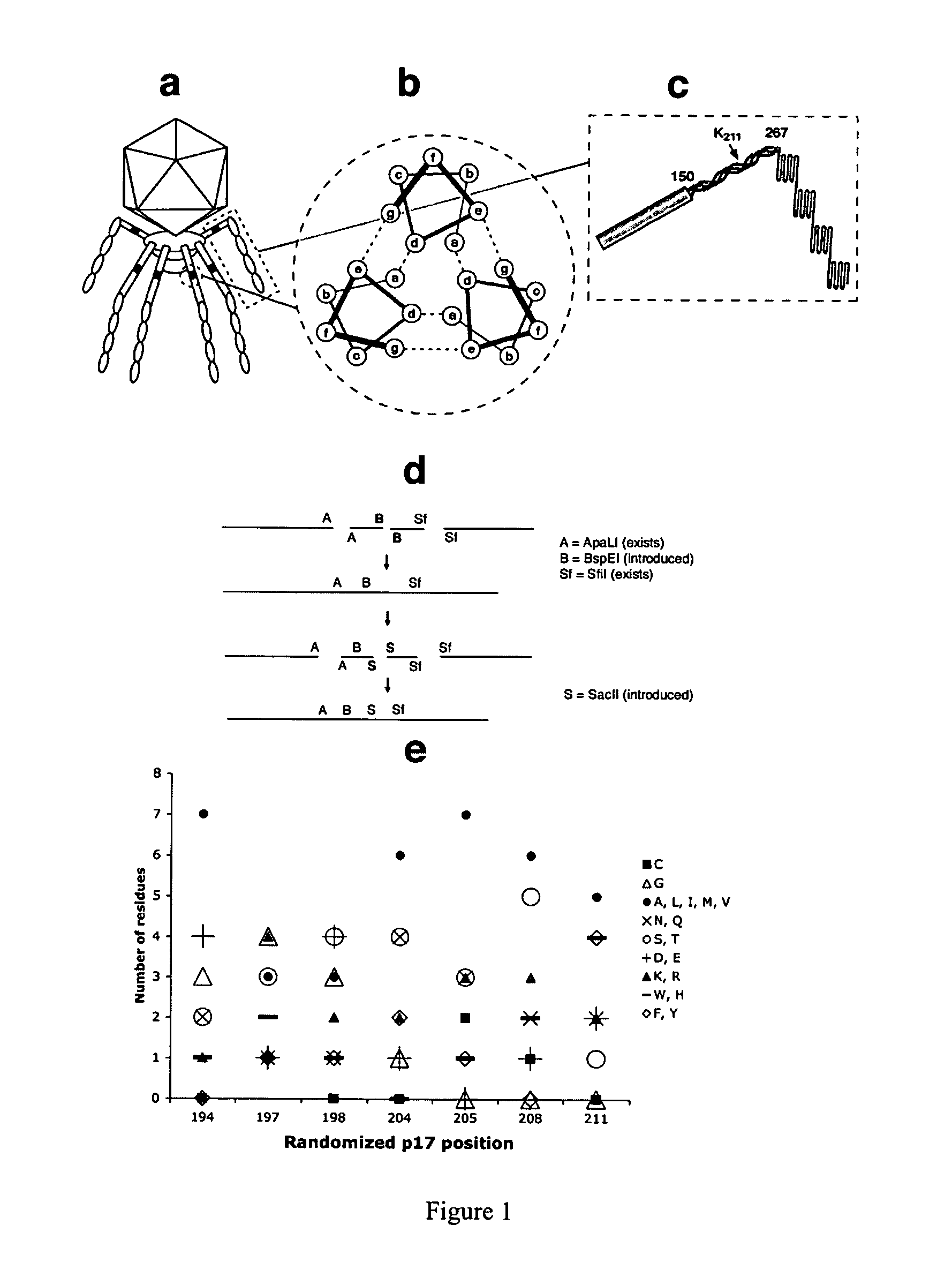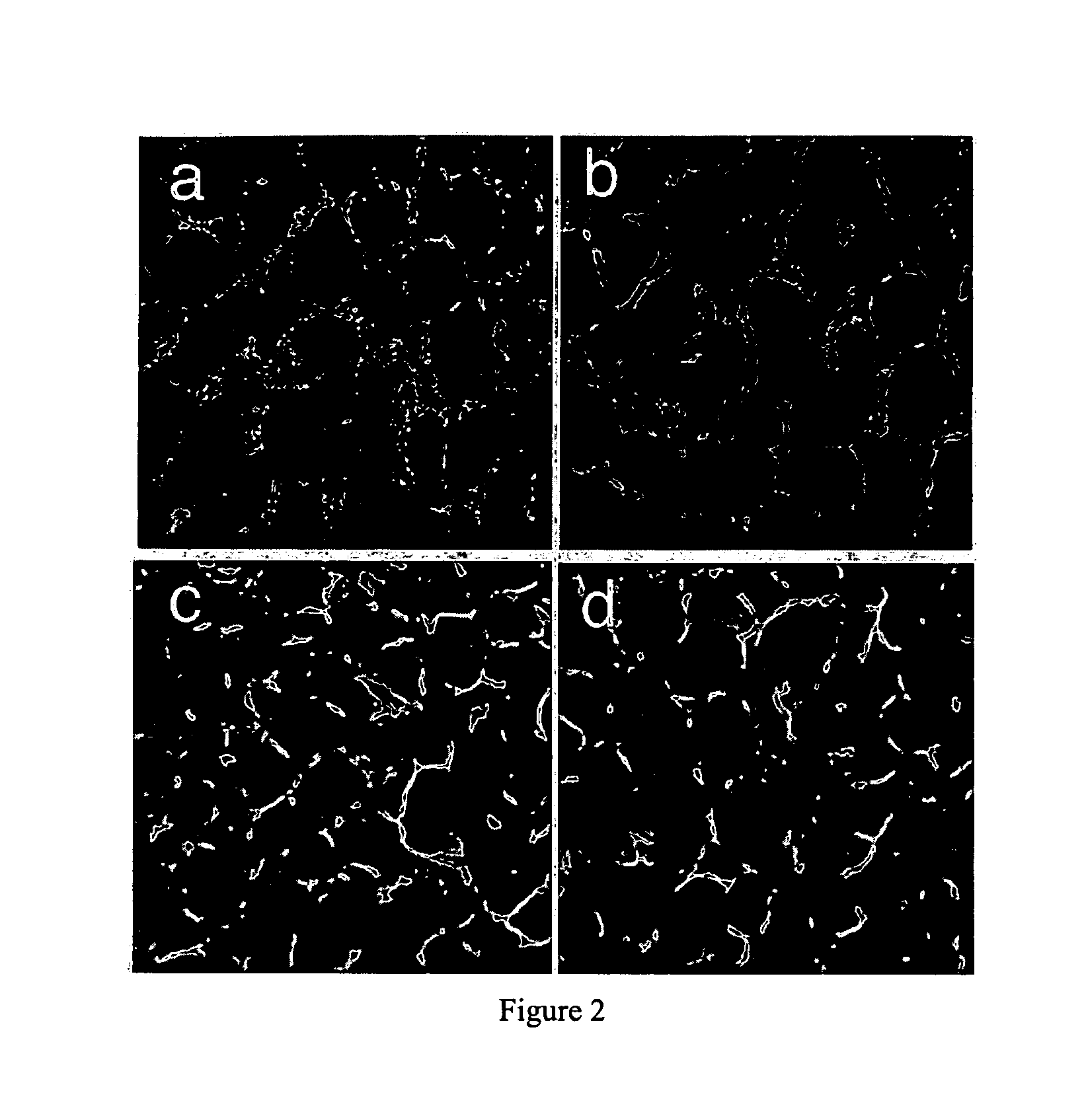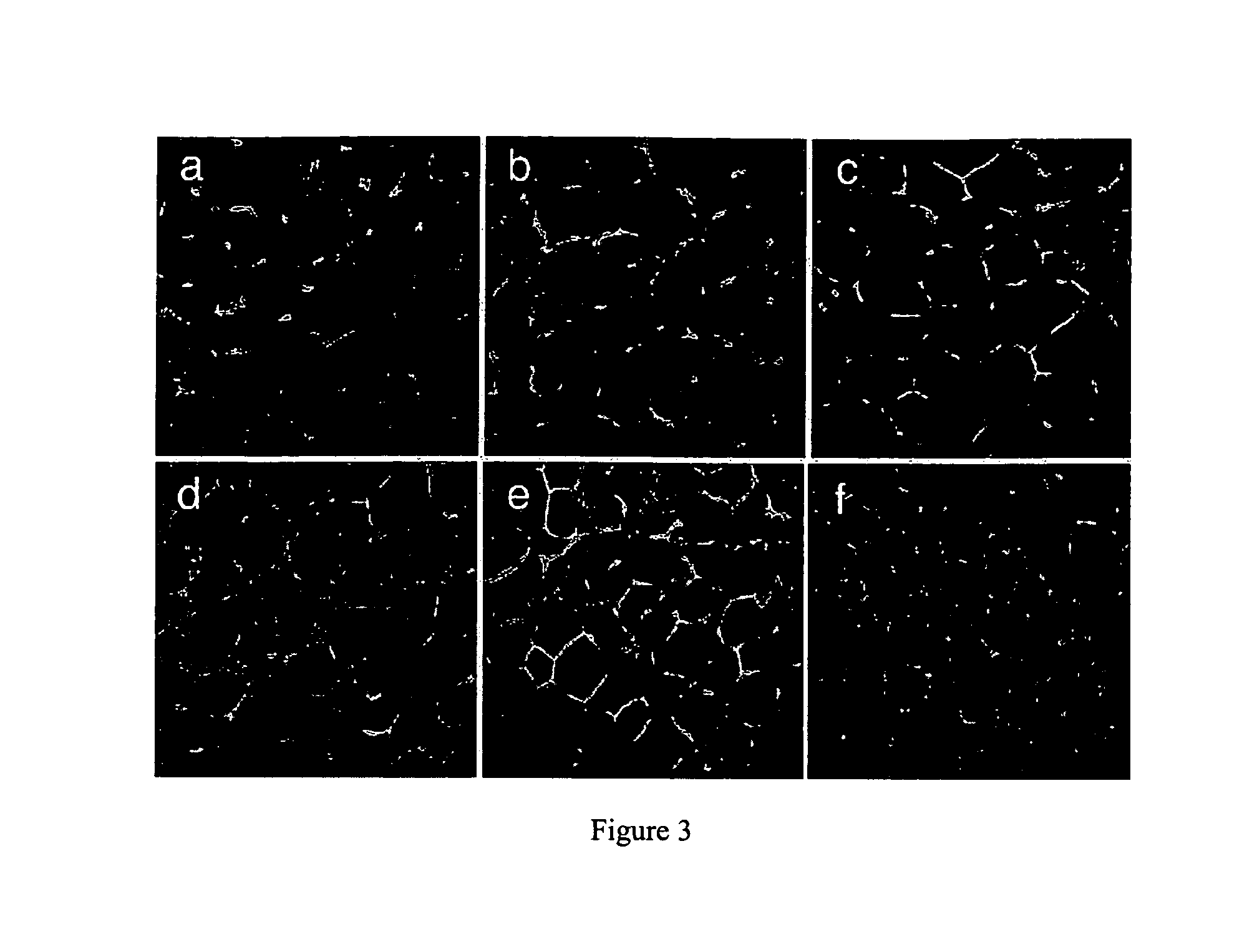T7 phage peptide display system and uses thereof
a phage and display system technology, applied in the field of t7 phage display system, can solve the problems of hampered use of filamentous phage for selection of liver-specific peptides, strong interference with liver-specific peptide selection, 500 nm in length of filamentous phage particles, etc., and achieves the effect of high specificity
- Summary
- Abstract
- Description
- Claims
- Application Information
AI Technical Summary
Benefits of technology
Problems solved by technology
Method used
Image
Examples
example 1
Preparation of Phage T7 with a p17 Display Site
[0085]Our initial attempts to prepare a phage vector with a p17 display site were hampered by the recombination between modified phage DNA and the wild-type DNA present in the Novagen packaging extract. The ultrasonication of the extract for 10 min reduced the level of recombination by ˜200 fold, allowing the introduction into gene 17 of unique cloning sites. The residual recombination that might produce significant background in liver selections was eliminated by using the “in-house” extract prepared from the “packaging” phage modified by truncating p10 after its Q343 (VVFQ*) (SEQ ID NO: 15) (see FIG. 6A, which shows the wild type p10b partial sequence (SEQ ID NO: 10), and the p10b sequence found in clone 20-6 (SEQ ID NO: 11), which prevents the recognition of phage by natural IgM (Sokoloff, Bock et al. 2001), and mutating p17 (K211→E), which disrupts the phage liver targeting (Sokoloff, Wong et al. 2003). With these modifications, any...
example 2
Displaying Peptide Libraries in p17
[0087]Three different libraries were displayed in p17. In two libraries, with seven and eight random residues (7-mer and 8-mer library, respectively), only the exposed positions of the p17 three-stranded coiled-coil were randomized (FIG. 1c, positions b, c, and f). The general structure of displayed peptides is shown in the top rows of Table 2 and Table 4. The general structure of codons encoding variable residues in the 7-mer and 8-mer libraries was NNN and NNY, respectively. Consequently, the 8-mer library was devoid of stop codons, as well as K, W, E, M and Q residues.
[0088]The third library, a 13-mer, contained clusters of five and eight adjacent random residues encoded by codons with the general structure NNN in p17 positions 194-198 and 204-211 (Table 3, top rows). Residues 199-202 were invariant in all three libraries as they corresponded to the annealing region of library-encoding oligonucleotides. The usage of different residues at randomi...
PUM
 Login to View More
Login to View More Abstract
Description
Claims
Application Information
 Login to View More
Login to View More - R&D
- Intellectual Property
- Life Sciences
- Materials
- Tech Scout
- Unparalleled Data Quality
- Higher Quality Content
- 60% Fewer Hallucinations
Browse by: Latest US Patents, China's latest patents, Technical Efficacy Thesaurus, Application Domain, Technology Topic, Popular Technical Reports.
© 2025 PatSnap. All rights reserved.Legal|Privacy policy|Modern Slavery Act Transparency Statement|Sitemap|About US| Contact US: help@patsnap.com



